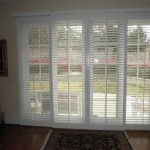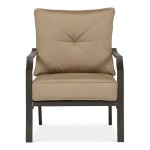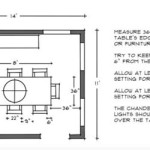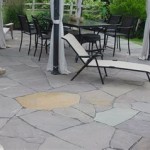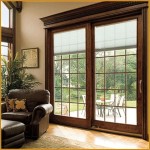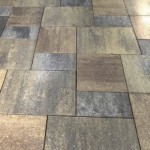Electric Table Patio Heaters: A Comprehensive Guide
Electric table patio heaters have emerged as a prominent solution for extending the usability of outdoor spaces during cooler seasons. These devices offer targeted warmth, ease of operation, and relatively low running costs, making them an attractive option for both residential and commercial settings. This article delves into the intricacies of electric table patio heaters, exploring their functionality, types, benefits, and factors to consider when selecting the optimal model.
An electric table patio heater, as the name suggests, is a heating appliance designed to be placed on or near a table, providing localized warmth to individuals seated around it. They are powered by electricity and typically utilize infrared radiation to generate heat. This radiant heat warms objects and people directly, rather than heating the surrounding air, making them more efficient in open-air environments compared to traditional convection heaters.
The core function of these heaters revolves around converting electrical energy into infrared radiation. This process involves passing electricity through a heating element, causing it to heat up and emit infrared waves. These waves travel through the air and are absorbed by surfaces and individuals, raising their temperature. The effectiveness of the heater is determined by factors such as wattage, element type, and reflector design, which influence the intensity and direction of the emitted heat.
Electric table patio heaters are engineered for outdoor use, incorporating features that protect them from weather elements. These features often include water-resistant or waterproof construction, stable bases to prevent tipping, and safety mechanisms to prevent overheating. The durability and reliability of these heaters contribute to their long-term utility in outdoor settings.
Types of Electric Table Patio Heaters
The electric table patio heater market offers a variety of models, each with distinct characteristics and advantages. Understanding these variations is crucial for making an informed purchase decision. The classification of heaters can be based on several factors, including heating element type, design, and control options.
One of the primary distinctions lies in the type of heating element employed. The most common types include:
*Quartz Heaters:
These heaters utilize quartz tubes containing a heating element, typically made of tungsten or nichrome wire. They provide instant heat and are relatively inexpensive. However, they tend to emit a bright orange light and have a shorter lifespan compared to other types. *Halogen Heaters:
Halogen heaters also use a heating element within a glass tube filled with halogen gas. They produce a more intense heat than quartz heaters and are more energy-efficient. The light emitted is also brighter, which can be a consideration for some users. *Carbon Fiber Heaters:
These heaters employ carbon fiber filaments as the heating element. They offer a softer, more diffused heat and are known for their long lifespan and energy efficiency. They also produce less light compared to quartz and halogen heaters. *Ceramic Heaters:
Ceramic heaters utilize ceramic elements to generate heat. They are known for their even heat distribution and energy efficiency. They are also durable and resistant to corrosion.Another categorization arises from the design of the heater. Several design variations cater to diverse aesthetic preferences and functional requirements:
*Freestanding Table Heaters:
These are self-contained units designed to sit directly on a table. They typically feature a wide base for stability and a heating element positioned to radiate heat downwards towards the table surface. *Hanging Table Heaters:
These heaters are suspended from a frame or umbrella above the table. They provide overhead heat and can be a good option for larger tables or areas where space is limited. *Clamp-On Table Heaters:
These heaters attach to the edge of a table using a clamp. They are portable and can be easily moved from one location to another. *Under Table Heaters:
These heaters placed under table. They are usually smaller and offer discreet comfort to whoever sits at the table.Finally, control options also differentiate models:
*Single Heat Setting:
These heaters operate at a single power level, providing consistent heat output. *Multiple Heat Settings:
These heaters offer adjustable heat levels, allowing users to customize the warmth to their preference and the ambient temperature. *Remote Control:
Some models are equipped with remote controls, enabling users to adjust the heat settings from a distance. *Timer Function:
Certain heaters incorporate a timer function, allowing users to set the duration of operation and prevent unnecessary energy consumption.Advantages of Electric Table Patio Heaters
Electric table patio heaters present several advantages over other types of patio heaters, such as gas or propane heaters. These benefits stem from their operational characteristics, ease of use, and environmental impact. These are some of the advantages:
*Ease of Use and Installation:
Electric heaters are generally simple to operate, requiring only a power outlet. The installation process is typically straightforward, involving minimal assembly. Unlike gas or propane heaters, there is no need to refill tanks or manage fuel lines. *Energy Efficiency:
Electric heaters are more energy-efficient than gas or propane heaters. They convert a higher percentage of energy into heat, reducing energy waste and lowering operating costs. Carbon fiber and ceramic heaters are particularly energy-efficient. *Clean and Safe Operation:
Electric heaters produce no emissions, making them a cleaner and more environmentally friendly option compared to gas or propane heaters. They also eliminate the risk of carbon monoxide poisoning, which can be a concern with combustion-based heaters. *Precise Heat Control:
Many electric heaters offer multiple heat settings, allowing users to adjust the heat output to their specific comfort level. This level of control is not always available with gas or propane heaters. *Low Maintenance:
Electric heaters require minimal maintenance. There are no burners to clean or fuel lines to maintain. Regular cleaning of the heating element and reflector is generally sufficient. *Portability:
Many electric table patio heaters are lightweight and portable, making them easy to move from one location to another. This portability allows users to reconfigure their outdoor space as needed. *Quiet Operation:
Electric heaters operate silently, without the noise associated with gas or propane heaters. This quiet operation enhances the ambiance of the outdoor space.Factors to Consider When Choosing an Electric Table Patio Heater
Selecting the appropriate electric table patio heater requires careful consideration of several factors. These factors include the size of the area to be heated, the desired heat output, the aesthetic preferences, and the budget. Taking these factors into account will ensure that the chosen heater meets the specific needs and requirements.
*Heating Area:
The size of the area to be heated is a primary consideration. A larger area will require a heater with a higher wattage to provide adequate warmth. Manufacturers typically specify the heating area for each model. *Wattage and Heat Output:
Wattage is a measure of the heater's power consumption, while heat output is a measure of the amount of heat produced. A higher wattage generally translates to a higher heat output. Consider the climate and the desired level of warmth when selecting a heater with appropriate wattage. *Heating Element Type:
The type of heating element can significantly impact the heater's performance and energy efficiency. Carbon fiber and ceramic heaters are generally more energy-efficient than quartz and halogen heaters. However, quartz and halogen heaters provide instant heat. *Design and Style:
Electric table patio heaters are available in a variety of designs and styles. Choose a model that complements the aesthetic of the outdoor space. Consider factors such as color, shape, and materials. *Safety Features:
Safety is paramount when selecting any electrical appliance. Look for heaters with safety features such as automatic shut-off in case of tipping or overheating. *Weather Resistance:
Ensure that the heater is designed for outdoor use and is weather-resistant. Look for models with waterproof or water-resistant construction. *Control Options:
Determine the desired level of control over the heat output. Consider models with multiple heat settings, remote control, and timer functions. *Budget:
Electric table patio heaters range in price from relatively inexpensive to more expensive models. Set a budget before shopping and compare prices from different retailers.
Westinghouse 1500 Watt Infrared Table Top Electric Outdoor Heater Wes31 1566 The Home Depot

Infrared Electric Bistro Table Outdoor Heater Black Energ Target

Westinghouse 1500 Watt Infrared Table Top Electric Outdoor Heater Wes31 1566 The Home Depot

Electric Table Patio Heater 2024 Deltabahrain Com

Wensum Electric Table Top Garden Patio Heater 2000w Buy At Qd S

The 2 Best Outdoor Patio Heaters Of 2024 Reviews By Wirecutter

Westinghouse 1500 Watt Infrared Table Top Electric Outdoor Heater Wes31 1566 The Home Depot

The 2 Best Outdoor Patio Heaters Of 2024 Reviews By Wirecutter

Charles Bentley 2000w Electric Table Top Outdoor Patio Heater Wickes Co

Backyard Pro Courtyard Series Silver Electric Outdoor Patio Heater 120v 1500w
Related Posts


